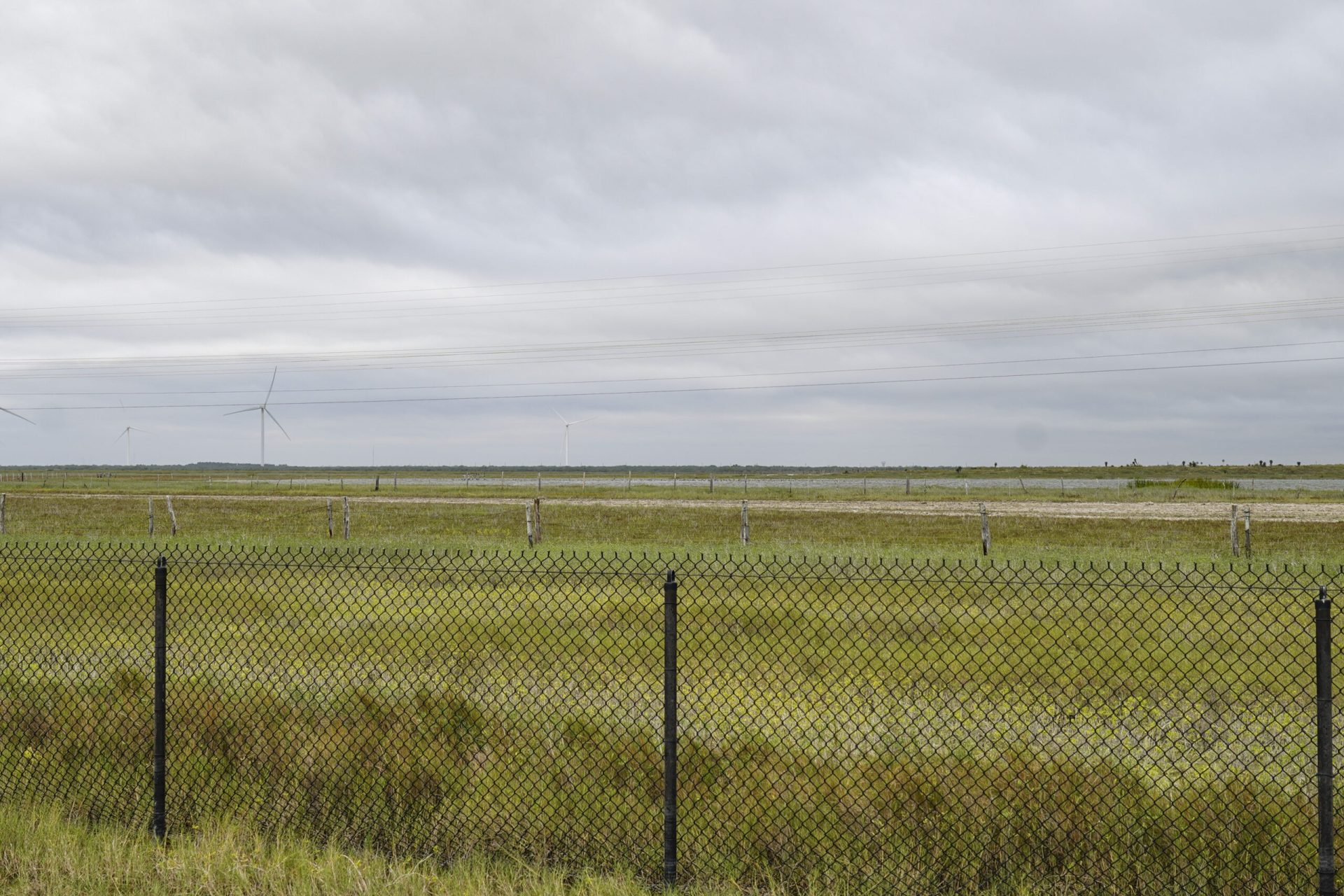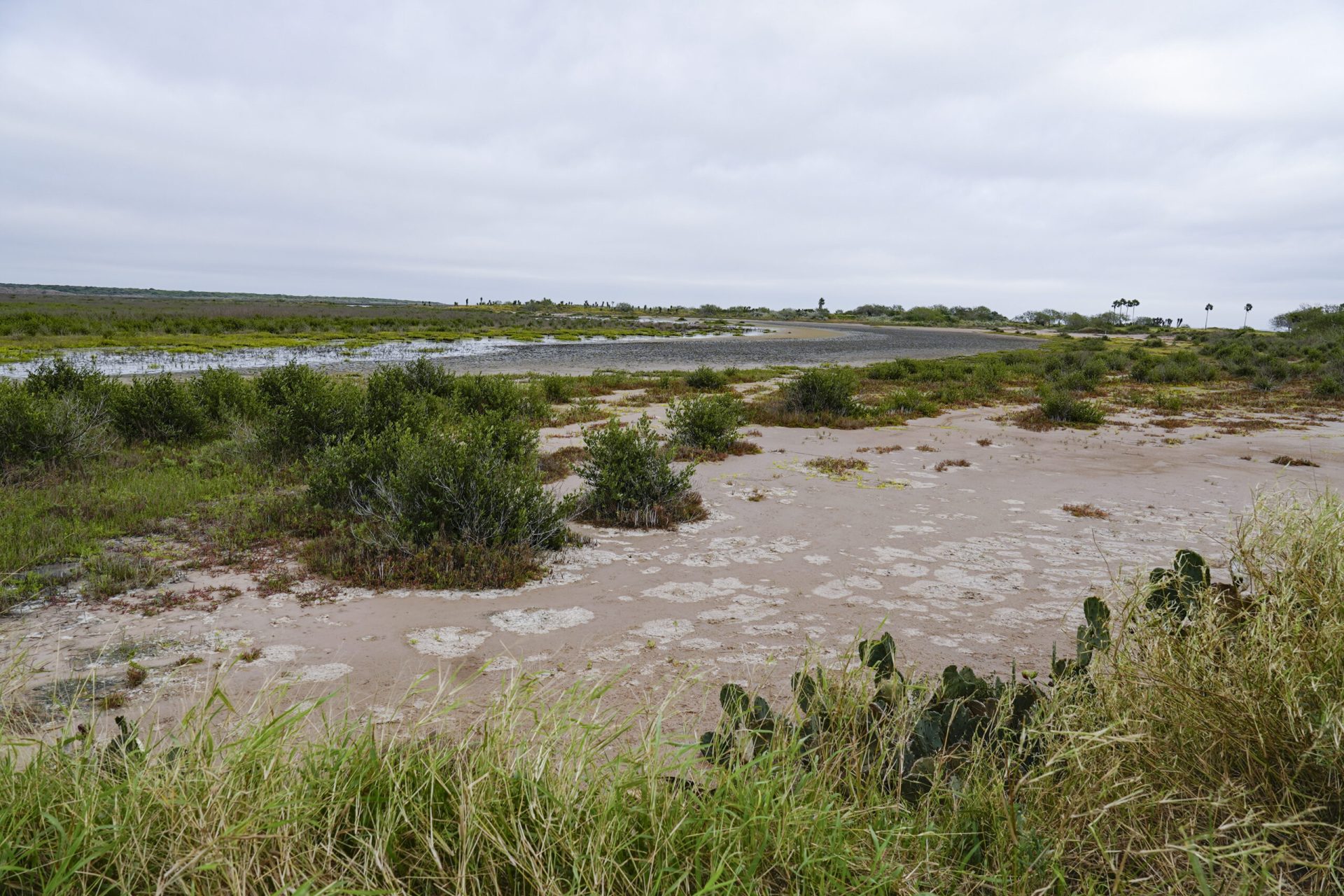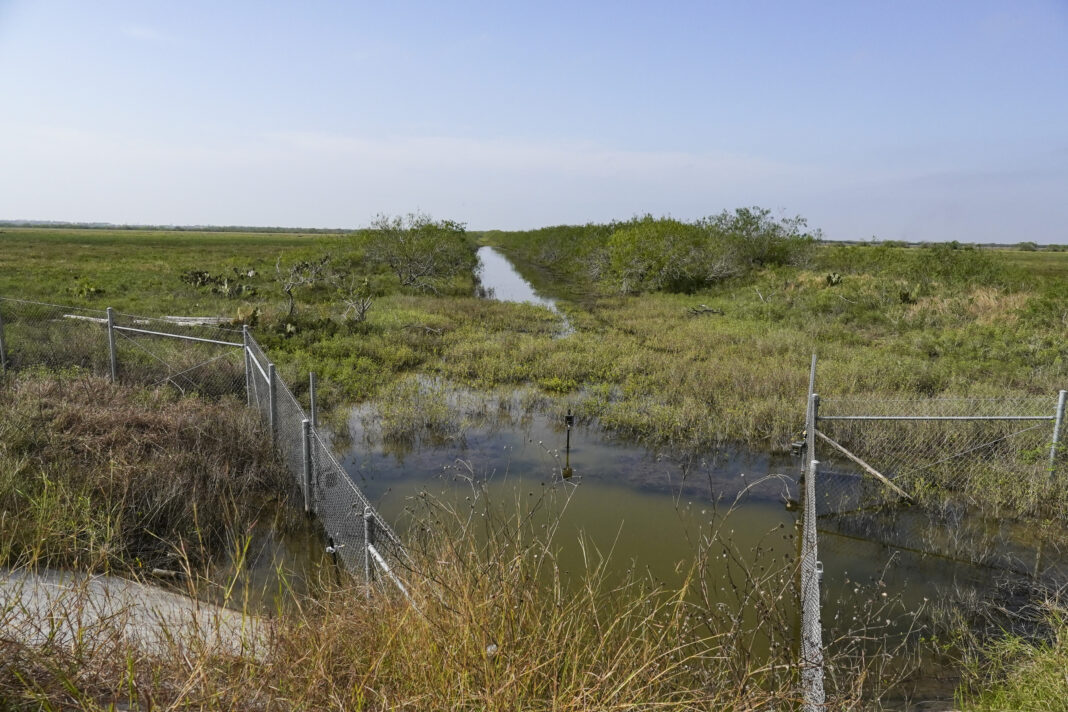HARLINGEN — So you want to restore your 3,661-acre farm back to its former days as thorn scrub wilderness.
It isn’t going to happen in a week.
Sergio “Sarge” Vasquez, supervisory wildlife refuge specialist at Laguna Atascosa National Wildlife Refuge, says it’s a process, and that he and the staff at the refuge are busy sussing out what it will take to turn their newest acquisition, Delaney Farm, back to its roots.
“Money is what’s holding us back, money and I guess just personnel,” Vasquez said. “Mainly its being able to acquire the trees and the tree tubes. We’ve started the process and right now we have 40 acres in with plans to plant another 300 acres this year.”
Laguna Atascosa National Wildlife Refuge added 5,173 acres recently, the Delaney Farm being the major tract at 3,661 acres, and another 1,512 acres in the area known as Holly Beach.
The addition of the acreage to the refuge, purchased from property owners for undisclosed sums, is an ongoing effort by the U.S. Fish and Wildlife Service, which operates the refuges. Down the road, the plan is to open what once was private land to the public, for hiking, biking, birding and hunting.
“Eventually, yes, that’s the plan,” Vasquez said. “I think it’s going to be a stepped approach of how we get the land opened up to the target audiences, feasibility-wise.
“And then we look at the user groups, and what user groups can get there,” he added. “For instance Bahia (the refuge’s Bahia Grande Unit) already has a big gravel road for hiking, biking and hunting, stuff like that, so it’s kind of more ready to go.”
Ag land makeover
The 5,000-plus acres added to Laguna Atascosa brings the total acreage of the refuge to around 115,000 acres.

The Delaney Farm tract is located south of the refuge’s headquarters. While much of the land acquired by the refuge over the past few years has been grassland and thorn scrub used as pasture for cattle, the new acreage is all ag land.
And that presents some interesting challenges, although the refuge has been successful at re-wilding some of its fields by planting native species using tree sleeves to protect the delicate seedlings from browsers like white-tailed deer and nilgai antelope, at least until they’re big enough to hold their own.
“The goal is it’s public land, and we’d like to get as much opened as possible, and the plan is to do that,” Vasquez said. “Well, that takes a step approach. And in that step approach we look at what user groups can get out there.
“Is a birder going to walk four miles in? I don’t know,” he added. “Are they capable? Is a hunter going to? Absolutely, they do it now.”
Hunters’ value
In much of the western United States, organizations have formed to resist additional federal government acquisition of land due to fears use restrictions will follow.
But Texans, says Vasquez, who grew up in Santa Rosa, have a different attitude about the issue because here access to land in order to hunt is an expensive proposition. Hunters can spend thousands of dollars a year for whole or part-interest in hunting leases on private property.
“And when you look at Texas, Texas is what, 94 to 95 percent privately owned?” he said. “So we’re the smallest group that offers land for the public. There’s us and the state and some other county areas as well, but for us to acquire land for the public. … In my mind, I’m looking at it on a resource-based vision.”
That means opening the refuge to affordable hunting opportunities. It may surprise some that a “wildlife refuge” would grant access to hunters, but it is one of the U.S. Fish and Wildlife Service’s priorities, and hunters provide a valuable service in helping maintain a proper balance of wildlife on the refuges.
After all, Laguna Atascosa was created as a winter refuge for the redhead duck, a popular species for hunters. Vasquez said some 87 percent to 89 percent of the bird’s entire North American population overwinters on the refuge, which translates to about 900,000 members of the redhead duck species.
“I think that to provide something like that for the locals, really its open to everybody in the United States, but if we’re going to recruit youth I think this is one of the best ways because you get out there in nature and you get to be one-on-one with nature and it’s not $2,500 to come out and do it for a year,” he added. “It’s $100 for one permit and that’s affordable, to be able to take an animal home and feed your family, and be a true conservationist.”
Poor Man’s King Ranch
Vasquez says he and refuge manager Brandon Jones are proud of the fact each year Laguna Atascosa hosts the largest draw hunt in the state of Texas.

In fact, fees paid by hunters are the largest outside revenue stream the refuge has, Vasquez said.
He, too, is a hunter. He said when he was younger, he decided to take up archery, and through the sport he became intimate with Laguna Atascosa.
His archery mentor mentioned he should put in an application for a refuge hunt when he was 18.
“And he goes, like, you need to put in for the refuge hunt,” Vasquez recalled. “And I was like, ‘What?’”
“And I did,” he said.” I got my first bow and started coming out there and the motto at that time was this refuge was the Poor Man’s King Ranch.”
Right balance
Vasquez insists the refuge values all of its user groups, from birders to hikers to bikers to hunters.
But he says hunters play a special role in maintaining the balance between conservation and preservation, and that those terms are not interchangeable, but represent different outlooks.
“What gets lost in the translation is the fact that when a hunter uses a property, it’s true conservation, they’re part of the management of that property, and the key word is management,” Vasquez said. “I love all my user groups but their mindset is not conservation, it’s preservation.
“But you can’t manage with just preservation,” he added. “We have to have conservation, and conservation is in our blood here. If we can use hunters to help us manage these properties, what benefits is the habitat and the animals themselves, leaving the preservation group, i.e. your birders that don’t hunt or your hikers that don’t hunt, also able to have a quality experience.”





